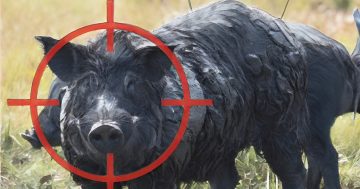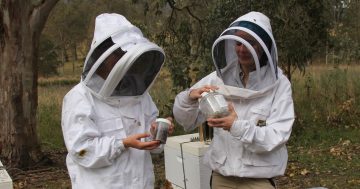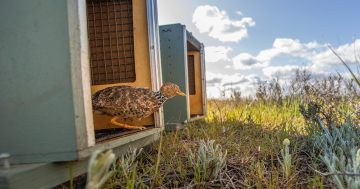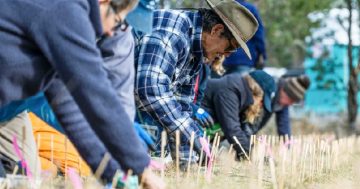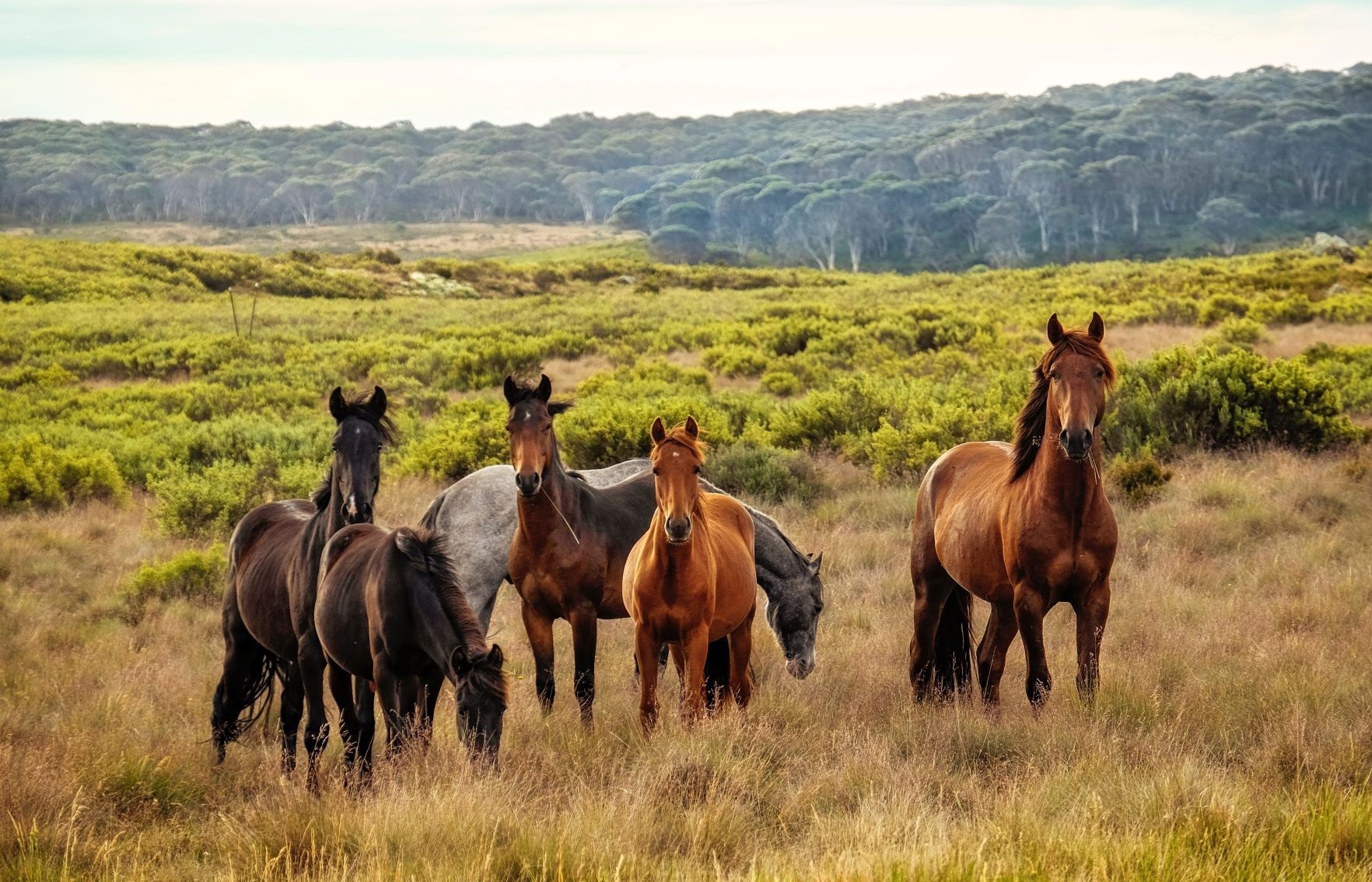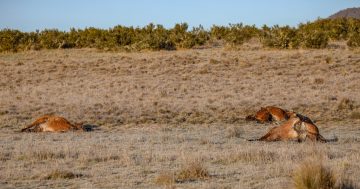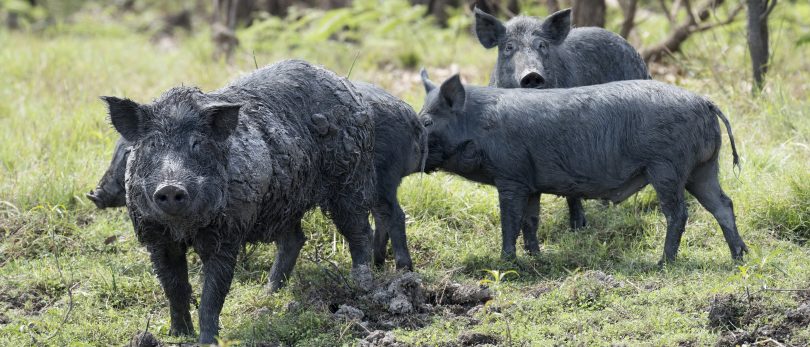
Using a range of technology the feral pig population in the Western Riverina has been curbed. Photo: Supplied.
The Western Riverina Pest Project has been awarded a national Froggatt Award for delivering the largest feral pig control program in Australia.
The annual awards, named in honour of the Australian entomologist who was a lone voice lobbying against the deliberate release of cane toads in the 1930s, recognises outstanding achievements in Australia’s fight against environmental weeds, diseases and pest animals.
The project has been recognised by the Invasive Species Council in the control and eradication award category for innovative use of emerging technology.
The Western Riverina Project began in 2016, focusing on feral pig control along the Murrumbidgee and Lachlan Rivers in NSW.
Local Land Services biosecurity officer in the Riverina region Suzie Holbery, who nominated the project, said it was the largest feral pig control program in Australia.
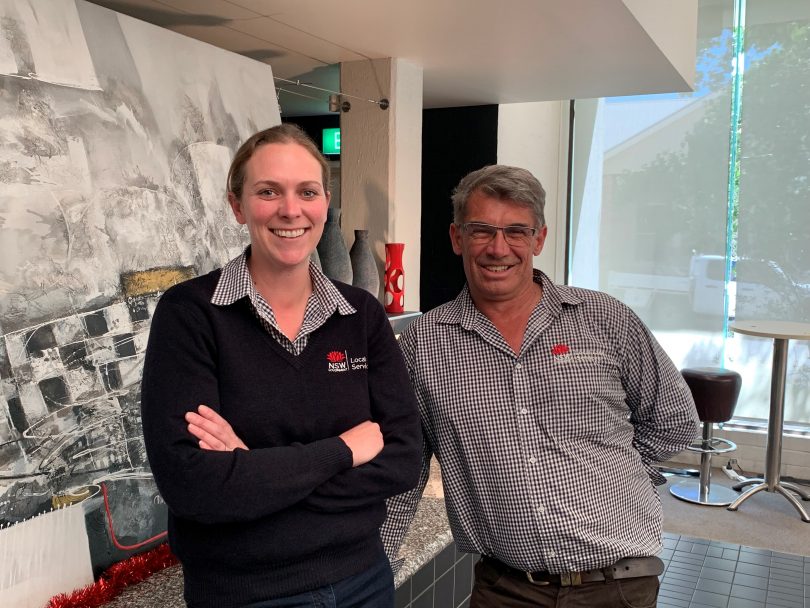
Winning the war and a national award: Riverina Local Land Services biosecurity officer Suzie Holbery and Biosecurity and Emergency services manager Michael Leane. Photo: Supplied.
“Landholders in the region reported feral pig numbers rising at an alarming rate, increasing stock losses, particularly newborn lambs,” she explained.
“This burgeoning feral pig population was also threatening fragile wetland ecosystems.”
Harbouring concerns the thriving feral pig population levels would exceed two million by 2023, the local branch of the NSW Farmers Association contacted Local Land Services from both Riverina and Western regions to coordinate a program and implement a targeted strategic plan.
“The scale of the initial problem was massive, meaning we needed to work together with landholders and a range of public agencies to respond in kind,” Ms Holbery said.
Work soon began to dramatically reduce the abundance of feral pigs and curb their rate of reproduction. It became a very high-tech undertaking.
“We used helicopter-mounted thermal cameras to gauge populations and then to monitor the impact our work was delivering and we’re very pleased with the result,” Ms Holbery said.
The project integrated a suite of other innovative technology including remote camera monitoring, livestock exclusion bait containment yards that allowed pigs access without harming cattle or merino sheep livestock and sampling feral pig DNA and blood to minimise disease outbreaks.
Results from the DNA sampling, handled through the CSIRO, have been incorporated into Australia’s African swine fever preparedness strategy.
“Thermal camera technology was also trialled during aerial shooting programs to assist shooters in locating feral animals hidden from our standard view,” said Ms Holbery.
GPS tracking collars were fitted to 33 feral pigs to measure their dispersal in response to aerial shooting.
Covering more than 1.4 million ha of privately and publicly owned land, the project has removed 43,608 feral pigs from the Western Riverina region.
“The population density was reduced from a peak of 11.2 pigs per sq km in 2017, down to 0.88 pigs in 2020,” Ms Holbery said.
Riverina Local Land Services general manager Ray Willis said he’s proud of these results and thanked landholders, project partners and staff for their support.
“This work is a collaboration between landholders, Riverina, Western and Murray Local Land Services, NSW National Parks and Wildlife Service and the NSW Department of Primary Industries to meet this emerging environmental threat head on,” he said.
“The project also used much innovation and out-of-the-box thinking to control feral pigs and monitor our impact.”
Feral deer and goats in the region were also targeted during aerial shooting programs on consenting properties.
Ms Holbery said the program’s purpose was to increase ground-based control of these pest species and reinvigorate coordinated fox baiting groups.
“The removal of these feral animals from West Riverina protects livestock from predation and disease and improves the health of the many wetlands and native species that exist across the landscape,” she said.


